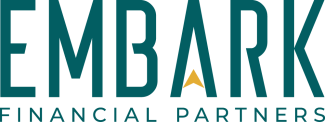
The Truth About College Savings
#EnhanceAptitude
Graduation season is upon us. Final projects and exams are due, graduation ceremonies are popping up on the calendar, and summer vacations are about to begin. With the demands of school for any age shifting to the background for the next couple months, this is a good time to revisit your college savings game plan. Having an appropriate game plan starts with remembering these three truths when developing your college savings strategy.
- Understanding Asset and Income Treatment on the FAFSA
Designing the right college savings strategy starts with understanding the Free Application for Federal Student Aid (FAFSA) system. The FAFSA looks at assets and income available to students for higher education and calculates the Expected Family Contribution (EFC). The higher EFC, the lower amount of federal aid available. The assets and income include that of the parents, student, and grandparents in some cases. The FAFSA has a special formula that groups every asset and income into either non-reportable or reportable. Non-reportable assets do not factor into financial aid and include retirement plans, cash value life insurance, primary residence, small businesses, and annuities. Reportable assets and income are factored into the FAFSA and are further grouped into student assets and income or parent assets and income. Generally, parent assets and income are treated more favorably than student assets and income when calculating eligibility for financial aid. For example, a 529 savings plan is a parent owned asset and increases the EFC by at most 5.64%. However, a UTMA/UGMA (owned by the student) increases the EFC by 20% of the asset value.1 Your Embark Wealth Advisor can provide a full list of reportable assets on the FAFSA.
- Pros and Cons of 529 Plans
529 Savings Plans are the most popular form of saving for college because of their many benefits. However, 529’s are not without their drawbacks. First, let’s discuss the benefits. For postsecondary/college education, taxpayers can take unlimited distribution amounts tax-free to cover college expenses. All the growth inside of a 529 can come out tax-free if the expenses paid are tuition, room and board, books, equipment, and supplies. Recently, 529’s were expanded to cover K-12 education expenses. A taxpayer is allowed a maximum of $10,000 per year in tax-free distributions to cover K-12 education expenses. Lastly, 529’s can be easily passed to a new beneficiary without changing account ownership. The only contingent with the beneficiary is the new successor beneficiary must be a family member of the original beneficiary.
Now let’s discuss the downside of 529’s. Depending on when you open the 529, they can be overfunded. Overfunding can happen with either excess contributions or combination of excess contributions and investment returns. If an education goal is fully funded through other means such as scholarships, grants, or financial aid and a 529 balance remains, the 529 must be either restructured to a new beneficiary (as mentioned above) or distributed through non-qualified distributions and that causes income tax consequences. Additionally, 529’s are limited to education use only. There’s no tax benefit or flexibility beyond education use. Non-qualified distributions are subject to income taxes and a 10% tax penalty. Lastly, 529’s have limited investment options since they are setup through a U.S. state. With every 529 plan, there’s a preexisting list of investment options (mostly mutual funds) that must be selected. Accounts such as UTMA’s/UGMA’s offer greater diversity in their investment options.
- Flexibility and Asset Diversification for Education Funding
The most important concept we stress with our clients in education funding is flexibility and asset diversification. Flexibility allows someone to adapt because it’s hard to predict how a child will approach college. With rising tuition costs, expansion of trade schools (which can be paid for by a 529 but cost significantly less than a 4-year institution), large employers offering non-college degree jobs, a generation is rethinking the idea of college. Fewer students are going to college than before the pandemic. According to the National Student Clearinghouse, more than 1 million fewer students are enrolled in college now than before the pandemic begin. The fall of 2021 had a decline of nearly 500,000 undergraduate students.2 The main point here being that flexibility, asset diversification, and correctly funding education savings plans allows for a shift in both your financial goals and your child’s aspirations while making the most of the tax savings provided in a 529 plan. It also provides better control of how your assets are deployed to support your child in either college funding or other ventures.
Sunday, May 29th is National 529 College Savings Day. There’s no better time to look at your 529 and education savings strategy with myself or other Embark Wealth Advisor. I would love to ensure you have an optimized education plan in place.
References:
- Kantrowitz, Mark. “How to Shelter Assets on the Fafsa.” Savingforcollege.com, Savingforcollege.com, 16 May 2022, https://www.savingforcollege.com/article/how-to-shelter-assets-on-the-fafsa.
- Nadworny, Elissa. “More than 1 Million Fewer Students Are in College. Here's How That Impacts the Economy.” NPR, NPR, 13 Jan. 2022, www.npr.org/2022/01/13/1072529477/more-than-1-million-fewer-students-are-in-college-the-lowest-enrollment-numbers-#:~:text=More%20than%201%20million%20fewer%20students%20are%20enrolled%20in%20college,that%20began%20the%20previous%20fall.

